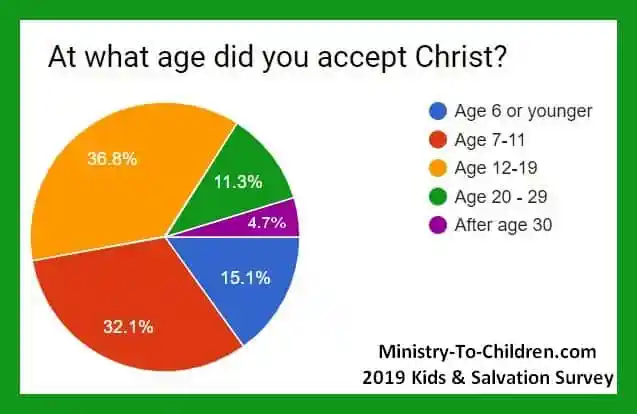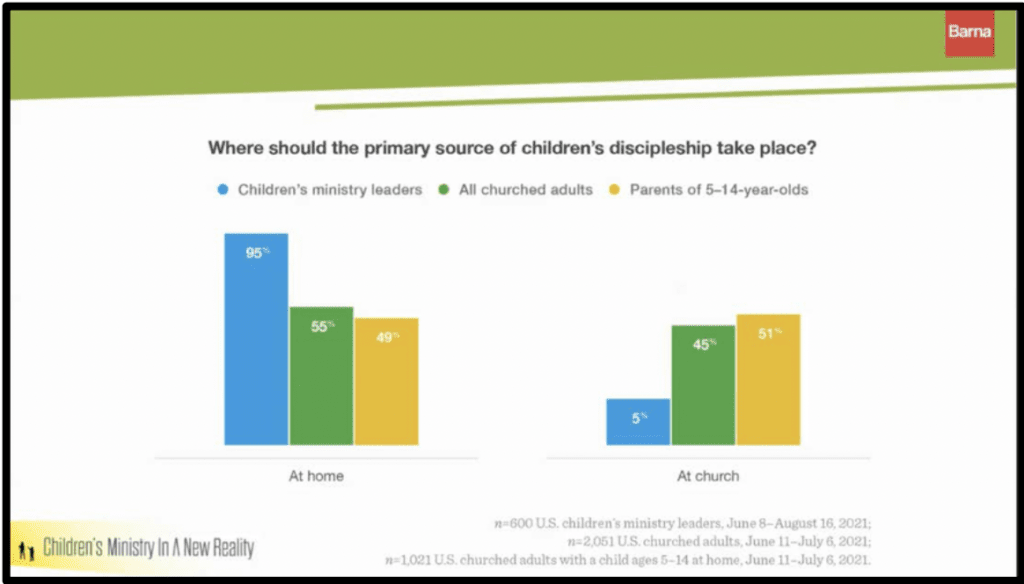
For leaders, volunteers, teachers, and parents who work in children’s ministries, the central goal has always been to lead children into a lifelong personal relationship with Jesus. These women and men hold a desire to actively respond to the great commission found in Matthew 28:19, 20, to share Jesus with all the world, and they believe deeply that children are a special part of this.
Where It Came From
Many dedicated souls serve in this part of the vineyard in local churches and conferences. They push through barriers such as burnout and fatigue, feeling ill-equipped, competing priorities, not feeling supported by parents, church, or conference, or being unclear about whether they are making an impact. They design and facilitate programs that engage boys and girls in an exploration of biblical truths via Sabbath School, Vacation Bible School, prayer conferences, Children’s Church, and various outreach programs. These have been standard channels of this ministry and traditionally were held in person.
The reality of today, informed and influenced by the pandemic, has driven many children’s ministry leaders to tap into their creativity and let go of long-held traditional ways.
Most children’s leaders and volunteers love what they do and often overextend themselves in time and effort to deliver high-quality and fun faith-development programs. They show determination, persistence, singular vision, and the ability to adapt in real time to keep going even when others would quit. What is the state of children’s ministry in the pandemic era?
The New Reality
The reality of today, in which children’s ministry is informed and influenced by the pandemic, has driven many leaders to tap into their creativity and let go of long-held traditional ways of doing children’s ministry. While some struggled, many have found ways to remain engaged with their children virtually and in person.
Training events were held in some territories to lower the learning curve and build the skills of those who were afraid of or resistant to actively using technology. Attendees gained a greater understanding of the children, especially generation “Alphas,” who are digital natives and are comfortable with using technology. They learned how to stave off kids’ boredom during Sabbath School and other programs by incorporating digital and other interactive activities that increased engagement and learning, creating memorable experiences.
Many churches have now reopened their doors to in-person worship. Most continue to provide a hybrid experience. Some members are opting for the convenience of worshiping from home, and engage in virtual church hopping. Those with small children are more likely to embrace this no-hassle option of setting up themselves and their children on their Sabbath School class-specific videoconference platforms and then watching the main worship service as a family.
The children we now serve are generationally considered the most connected yet also the loneliest. There is a need to create and foster a feeling of belonging not just in their families but in their churches and communities. They need to know that they are a valued and integral part of the life and success of the home and church. When children feel loved, safe, seen, and valued by their families and communities, they are more likely to develop long-lasting experiences and connections, along with a desire to serve or give back what they have received. They will want to pass it on to others.
Where should children receive their primary discipleship training? Ninety-five percent of children’s ministry leaders say it’s at home.
One of the challenges or obstacles that children, parents, and leaders face is the overwhelming amount of stimuli, marketing, and fingertip-reach distractions that redirect and hold children’s attention. Children are being strategically targeted by companies via books, TV shows, movies, educational materials, games, fantasy islands (Disney, for example), and even clothing. Corporations know that children are influencers in their homes, schools, and any venue where children or parents gather. Kids have purchasing power and what marketers call Pester Power. The latter sounds negative, and to the person it’s aimed at—usually a parent—it is. This is the ability children possess to nag their parents until they get what they want. Knowing this, marketers promote products or services at specific times, using well-researched language and props to hook children into wanting something that, most of the time, they don’t need.
Should we leverage Pester Power, promoting church programs in a way that encourages children to "nag" parents to "buy" into them, in service of a more noble cause? Or is it best to facilitate a mindset shift in how children’s ministry is viewed by parents, leaders, the church, and children alike? Let’s take a closer look.
Key Trends in Children’s Ministry
Some of the key trends and findings identified over several years regarding children’s ministry and faith formation have been documented by the Barna Research Group. One finding that has been shared repeatedly by other researchers and was first revealed by George Barna in his book Transforming Children Into Spiritual Champions, states that most people make up their minds about faith by the time they are 13 years old.
Barna emphasized this in a 2006 FamilyLife podcast entitled "Building the Church, One Child at a Time." He said:
First of all, what we found is that with human beings, in this country, at least, by the age of nine, your moral foundations are pretty much in place. So we can’t wait until a person is in their teen years, the college years, the young adult years, and say, “OK, now we’ll get busy with them.” Very early, you’ve got to get to it.
Secondly, we looked at the spiritual development of people, and we found that by the age of 13, most of what you believe about the content of the Bible, about the Bible itself, about God, about the church, about spiritually, about your role in God’s world—all of these things are pretty well formulated in your mind, and pretty much do not change after the age of 13.
Another faith-based group, Ministry-to-Children.com, confirmed this finding in its 2019 survey.

Barna continued in his comments:
And there’s another element, too, that I can’t take you to research and say, “Look at this,” but I can take you to Scripture and show it to you, and that’s understanding that all life, essentially, is war. We live every day of our life in the context of spiritual war. Now, you’ve got to try to figure out, what is Satan doing? You know, you’re either on God’s side or Satan’s side. I’m on God’s side, so I want to know, what’s the enemy trying to do to me? And it finally occurred to me, as I looked at all the research and tried to understand how are the lives of people influenced, that Satan, the brilliant strategist that he is, has realized, “If I can win over children, the war is over.”
Barna went on to share his thoughts on who’s responsible to “train up a child in the way he should go, and when he is old he will not depart from it” (Proverbs 22:6, NKJV), noting that it is the parents’ responsibility, with the church’s help.
What’s the general consensus on the latter, 16 years later? In Barna Research Group’s May 25, 2022, Resilient Children’s Discipleship webinar, the presenters shared the findings of their latest research, which was done in partnership with Awana, a worldwide ministry for children. Below are some findings that warrant a closer look to better understand the current state of things and to use in practical ways to re-envision the mission of children’s ministry today.
It reaffirms children’s ministry as a top priority for church leaders and signals a need to call all stakeholders to the table for an open, honest conversation that will ultimately better empower leaders, parents, and children.

What are the top priorities for children who age out of children’s ministry programs? All three groups surveyed are in agreement that by the time they conclude their time in children’s ministry, kids should know that Jesus loves them. This is good news.

Where should children receive their primary discipleship training? Ninety-five percent of children’s ministry leaders say it’s at home, while churched adults and parents seem unsure, choosing down the middle. Parents, leaders, and church members should ask themselves, What’s your answer to this question? Most important, who then owns the disciple-making of our children?

These findings support the premise that parents feel they need help from children’s ministry. There may be some barriers to satisfying their need for training, but these are not insurmountable. Ministry leaders can seek out, identify, and utilize professionals at the local, conference, and union or division level.

Barna’s surveys show there is a clear gap between the level of support (theory) and level of engagement (practice) (Figure 5). What this looks like is saying that you support a children’s program, but not showing up or actually volunteering to help with or attend the program. Volunteers had the smallest gap between support and engagement. Engagement by leaders, church staff, parents, and other members is often what’s needed to reinforce that children are a top priority.
The study proposes a shift or a new reality from ministry to intentional discipleship from the inside out, and better equipping and support for parents as disciple-makers of their children.
Glimpses From the Vineyard
Leaders across several unions responded to a GNYC Children’s Ministries pulse survey and shared the following quotes, which may resonate for many and serve to remind children’s ministry leaders of the reasons they work tirelessly and steadfastly in this ministry.
What keeps you motivated and encouraged to work in this ministry on behalf of our children?
Notable Impact of Children’s Ministry
Kelli Wasemiller, a children’s ministry director for the Dakota Conference in the United States, attests to the power of children’s church: “Kids church is where the kids put on the entire church service and are able to take ownership of the service. It incentivizes kids to want to come to Sabbath School, because that’s where they plan and practice. Last kids’ church, there were more kids under the age of 16 at church than there were adults over 60, and that’s worth celebrating!"
Carmen Gutierrez, a local children’s ministry coordinator in the Greater New York Conference, said that one of the Sabbath School classes grew because of Vacation Bible School (VBS). She and her team are now actively engaging parents, including them in all facets of their programming.
“Before you teach the commandments diligently to your children, you must first love the Lord your God in a way that honors Him with your whole life.”
Josalynn Clark, a youth in a local Greater New York Conference church, launched a Youth Discipleship Mission: Bible Mentorship program to engage children ages 4 to 16. She’s witnessed the impact in the increase in belonging, especially in one child who felt lost and lonely and is now doing better in school.
The assistant to the director for children's ministry in the Carolina Conference said, “A long time ago, I was working as a teacher, and I received a child whose father had just died in a car accident. He was a sad child, and after class, we stayed talking for a bit, and I began to give him short Bible studies. At that time, the boy was baptized, and I never heard from him again, until 39 years later, when he contacted me through a classmate to thank me for the time I took to tell him about Jesus. Now he is a theological student and international preacher!"
Talk about impact! Parents and leaders, plant and water the seed of faith and a love of Jesus in our children. We may not see in the short term the fruit they bear. What matters most is the long-term, enduring, life-transforming personal relationship with Jesus that they live daily and share with others.
Looking Ahead
General Conference president Ted N. C. Wilson, in his welcome message at the 2022 Global Children's Ministry Conference, cited Deuteronomy 6:5–7, which urges that we love God with all our hearts and teach the commandments diligently to children.
"Your success in making disciples for the next generation is directly connected to your personal experience with Jesus and commitment to Him,” Wilson said. “Before you teach the commandments diligently to your children, you must first love the Lord your God in a way that honors Him with your whole life.”
I second this, and believe that the responsibility to make disciples of the children in our care doesn’t lie squarely on one group but rather lies in the partnership of multiple groups in our churches, modeling their personal relationship with Jesus and sharing their love for Him with children. The well-known and well-worn saying “It takes a village” rings true for the disciple-making of children. Just as the entire church becomes actively engaged in the promotion and support of an evangelistic campaign, in the same way discipleship should be the integrated norm for our churches on behalf of children. Pastors, elders, and departmental leaders can intentionally, consistently, and strategically include children’s ministry in their planning, which will move the needle toward deeper and wider understanding and connection to the needs and opportunities to shepherd children into a lasting personal relationship with Jesus.
Together we can make it less intimidating for parents to own and embrace making disciples of their children. Let’s become co-owners of this mission. There is much work to be done, and together, with the help of the Holy Spirit, it will be made lighter.
Michelle Broomfield is director of Children’s Ministries at the Greater New York Conference of the Adventist Church in Manhasset, New York, United States.